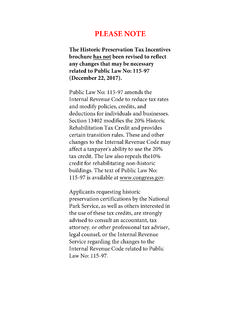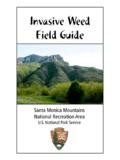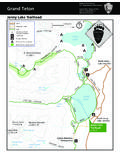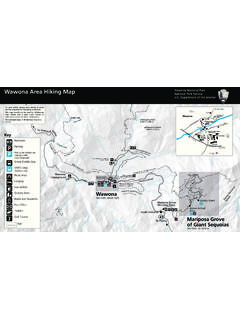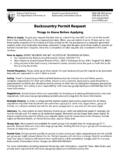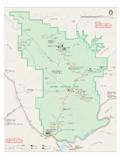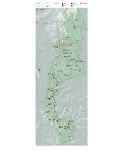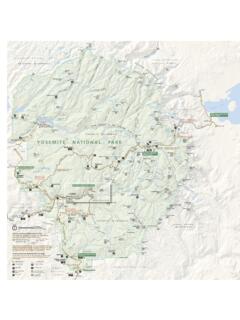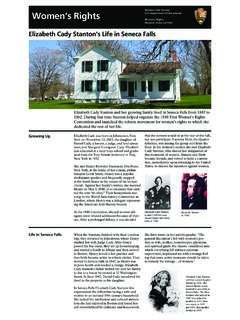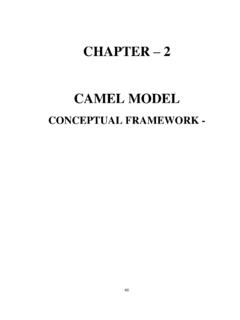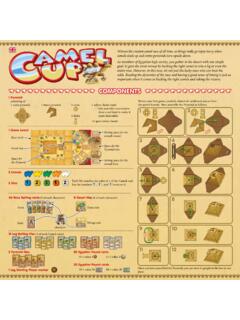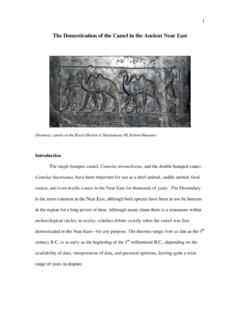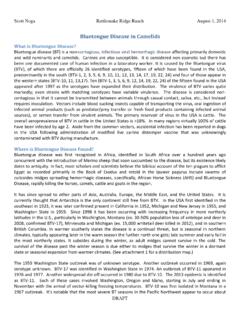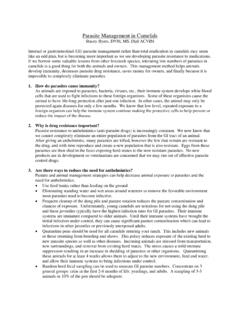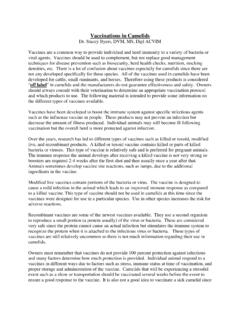Transcription of CAMELS AT FORT DAVIS - National Park Service
1 fort DAVIS National Historic Site National park Service Department of the Interior Curriculum Materials Grades 6-8 Student Activity: CAMELS at fort DAVIS CAMELS at fort DAVIS In 1857, twenty-five CAMELS arrived at fort DAVIS . They were on their way to Arizona to lay out a wagon road. Lieutenant Edward Beale was in charge of the CAMELS and their Turkish, Greek, and Armenian camel drivers. Secretary of War Jefferson DAVIS wanted to see if CAMELS could survive in the western deserts and haul supplies for the army more efficiently than the mules. Lieutenant Beale reported that They [the CAMELS ] are the most docile, patient, and easily managed creatures in the world and infinitely more workable than mules. Camel Corps picture taken at fort DAVIS Frontier Festival 2004 In 1859, the Army conducted another test to compare CAMELS to mules. Afterwards, the officers believed the CAMELS did a better job.
2 During another test in 1860, a camel caravan with soldier escorts went from fort DAVIS to Presidio along the Rio Grande and into the Big Bend. The soldiers almost died from lack of water before getting back to the fort , but the CAMELS did remarkably well. The army had problems, however, using the CAMELS . Other animals, like horses and mules, did not get along with the CAMELS . When CAMELS got near a horse, the horse would buck, often throwing the rider, and run off. Another problem was that sharp rocks of the southwest desert often cut the soft-padded feet of the CAMELS . CAMELS also had difficulty in muddy or slippery terrain. With the outbreak of the Civil War in 1861, many of the CAMELS , which were kept at Camp Verde (near Center Point), Texas, became Confederate property. At the end of the War, the U. S. Army regained control of Camp Verde and other army posts in Texas. The army sold the CAMELS at auction in 1866, its attention now focused on Reconstruction and other major issues.
3 By this time, railroads were expanding and the transcontinental railroads would soon span the continent solving many of the army s supply problems and rendering the use of CAMELS unnecessary. 65 QUESTIONS: 1. Should the army have tried to use CAMELS ? Explain your thinking. 2. Most people in the 1850s had never seen a real camel or even a picture of one. Write a short paragraph about how someone in the United States at that time might react to seeing a camel for the first time. How would that person describe or react to the animal? 3. Perhaps the Army s camel experiment did not work because it was simply a case of a good idea in the right place, but at the wrong time. Have you ever had an idea that you thought was good, but it didn t work out? Explain what happened and how you felt about the idea not working out. Or choose another idea in history that might have worked out if the timing had been different.
4 4. Imagine seeing CAMELS walking around west Texas today! What if the Civil War and then the railroads had not come along, bringing an end to the camel experiment? Would you like to see CAMELS grazing today rather than cattle? How might history have been different? Write a short essay about this. 66
